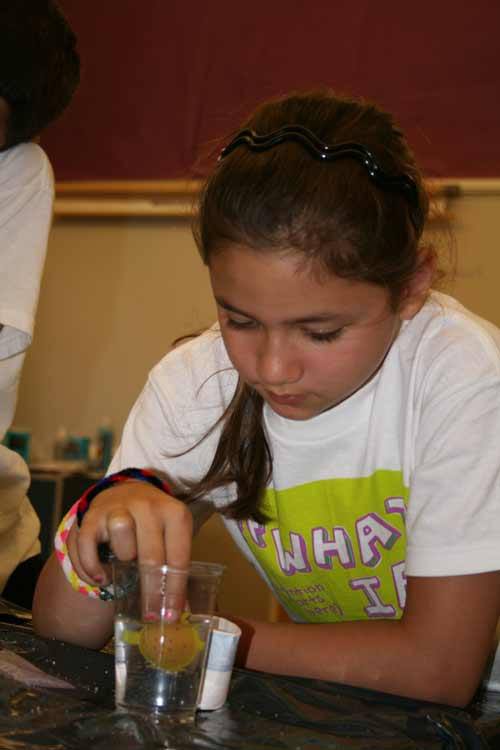The waiting is the hardest part.
After getting their hands all gooey and squeezing their polymer powder and food coloring into a special mold, the kids at Camp Invention this past week at Daffodil Valley Elementary School had to hold the mold in a cup of water, forcing the long chains of molecules in the polymers to expand and then begin to harden.
After that, it was still something of a wait until the kids brand new, hommade super balls would be ready.
“Welcome to the longest six minutes of the week,” said instructor Ben Walz, who normally teaches math and science in tacoma.
But the end of the day, each student took home their very own bouncy ball that they made themselves, just part of the fun at Camp Invention, a week-long day camp designed to get kids interested in science and to encourage them to invent new things.
“The patent office is getting less and less patent applications,” explained Camp Director Nancy Lenhian.
Now in its sixth year at Daffodil Valley, the program includes four different modules, all designed to get kids interested in the messier sides of science by allowing them to take things apart, rebuild them and invent new things the world has never seen.
“Every year is a different program,” Lenihan said.
This year’s theme was “Spark” and the students split among four modules that included “The Curious Cypher Club,” where they cracked codes and build clubhouses, “Bounce! An Atomic Journey,” which showed how molecules form mixtures and compounds and included the bouncy ball experiments, “Game On: Power Play” the kids use nontraditional equipment to play classic games and “W!LD: Wondrous Innovations and Living Designs,” where the kids explored how the animal world responds to problems and tried to adapt them for humans.
There was also “I Can Invent: Edison’s Workshop,” where the kids built complicated, multi-step machines to complete simple tasks (a la Rube Goldberg) out of old pieces and parts.
According to Lenihan, Edison’s Workshop and the Bouncy Balls were the top draws this year, especially Bounce where the day before they made bouncy balls, the kids had a chance to mix their own Silly Putty by combining liquids.
“The kids are just in awe,” Lenihan said.
In the “W!LD” module, the students observed nature and how to mimic their designs, such as how windmill blades are designed like whale fins or how some species of snail incorporate the iron they eat into creating a harder, sturdier shell.
To learn more about getting iron in their diet, the students crushed up bags of Total cereal, which promises 100 percent of the daily recommended amount of iron, and then used magnets to literally draw the iron out of the breakfast flakes.
“They learned they’re eating iron every day too,” Lenihan said.
Lenihan said the Camp is a fun way to teach kids about science and added that students who participate usually have a head start in district science fairs.
Lenihan also said the camp teaches the kids the important lessons of changing a single variable in a test and keeping precise notes to learn what a difference a single change can make.
For example, in “Edison’s Workshop,” the students learned that Thomas Edison tried 1,450 materials before finding one that word work as a filament to a light bulb.
“That’s really important for these kids: Making mistakes is OK,” she said.
For more information on Camp Invention, visit www.invent.org.



